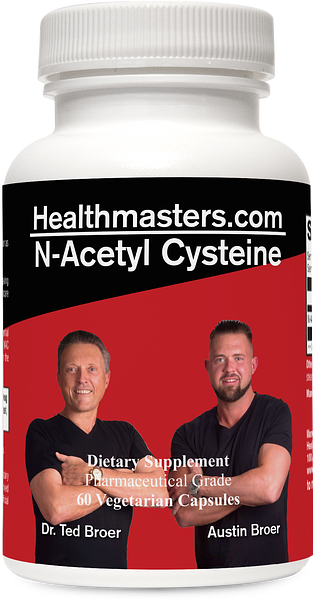Are you looking to give your body the ultimate boost in health and protection? 💪🌱 Our N-Acetyl Cysteine (NAC) supplement is exactly what you need to power up your detox, protect your cells, and support your overall vitality. ✨
Why You Need NAC:
Your body is constantly exposed to toxins, pollutants, and free radicals from the environment 🌍, and it needs an extra layer of defense to keep you feeling your best. NAC is a powerhouse antioxidant ⚡ that helps protect your cells and supports the production of glutathione, the body's most potent antioxidant, known as the "master detoxifier." When you add NAC to your routine, you’re giving your body the ultimate tool to fight oxidative stress 💥, support detoxification 🧹, and enhance your overall health 🌟.
Key Benefits of NAC:
-
Supports Glutathione Synthesis
Glutathione is your body’s natural defense against free radicals and toxins 💪, but as we age, glutathione levels naturally decrease 🕰️. NAC enhances your body’s ability to produce more glutathione, supporting your immune system 🛡️, detoxification 💧, and overall cell health 🧬. It’s the perfect way to maintain your body’s natural defenses. -
Powerful Detoxification
Whether you're exposed to environmental toxins 🏭, pollution 🌫️, or everyday stress 😤, NAC helps your body neutralize and detoxify harmful substances. By increasing glutathione levels, NAC supports your liver 🍃 in breaking down toxic chemicals and heavy metals ⚖️, ensuring your body stays clean and healthy. -
Fights Oxidative Stress
NAC’s ability to scavenge free radicals means it helps protect your cells from oxidative damage 🔒. By neutralizing harmful radicals like hydrogen peroxide and hydroxyl radicals 💨, NAC acts as an essential defense against premature aging 🕰️, cellular damage 🧬, and chronic diseases. -
Supports Respiratory Health
NAC is known for supporting healthy respiratory function 🌬️ by promoting normal mucus production and reducing oxidative stress on your lungs 🫁. Whether you’re fighting seasonal allergies 🌸 or looking to improve overall lung health, NAC provides the support you need for clear and easy breathing 💨. -
Eye Health
Research also suggests that NAC may help protect your eyes 👀 by supporting antioxidant levels and defending against oxidative stress. Keep your vision sharp 🔍 and your eyes healthy with NAC’s powerful benefits. -
Supports Overall Cellular Health
With 600 mg per capsule 💊, NAC ensures that every cell in your body gets the antioxidant support it needs. From your liver and lungs to your heart ❤️ and immune system 🦠, NAC boosts your body’s ability to protect, repair, and thrive 🌱.
The Cleanest, Most Powerful NAC
Our NAC supplement is made with 60 vegetarian capsules 🥦 to ensure that you get consistent, high-quality support day after day. With each serving packed with 600 mg of NAC, you’ll be giving your body the boost it needs to fight oxidative stress ⚡, detoxify 🧼, and stay strong 💪.
Don’t Wait to Support Your Health
Whether you're concerned about environmental toxins 🌍, looking to support healthy respiratory function 🫁, or simply want to protect your cells from oxidative damage, NAC is your ultimate ally 💥. Give your body the detox and antioxidant power it deserves 🌟, and take control of your health today.
Order now 🛒 to start feeling the benefits of N-Acetyl Cysteine and give your body the protection and support it needs to thrive! 🌱






